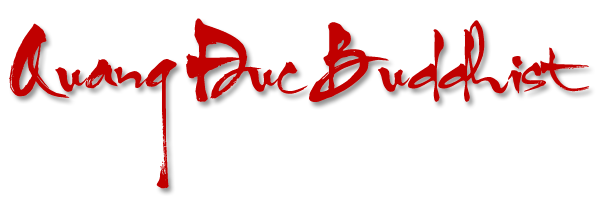Zen Master Thich Nhat Hanh
--o0o--
When we do walking meditation, the point is not to get somewhere, but rather to practice, using walking as the object of our attention. Even when we do have to get somewhere and must drive to do so, there is an opportunity for practice. Thich Nhat Hanh, Vietnamese Zen master and poet, has written a number of gathas, or brief verses, for enhancing our mindfulness during everyday activities, even driving a car.
--o0o--
Before starting the car,
I know where I am going.
The car and I are one.
If the car goes fast, I go fast.
If we are mindful when we start our car, we will know how to use it properly. When we are driving, we tend to think of arriving, and we sacrifice the journey for the sake of the arrival. But life is to be found in the present moment, not in the future. In fact, we may suffer more after we arrive at our destination. If we have to talk of a destination, what about our final destination, the graveyard? We do not want to go in the direction of death; we want to go in the direction of life. But where is life? Life can be found only in the present moment. Therefore, each mile we drive, each step we take, has to bring us into the present moment. This is the practice of mindfulness.
When we see a red light or a stop sign, we can smile at it and thank it, because it is a bodhisattva helping us return to the present moment. The red light is a bell of mindfulness. We may have thought of it as an enemy, preventing us from achieving our goal. But now we know the red light is our friend, helping us resist rushing and calling us to return to the present moment where we can meet with life, joy and peace. Even if you are not the driver, you can help everyone in the car if you breathe and smile.
A number of years ago, I went to Canada to lead a retreat, and a friend took me across the city of Montreal. I noticed that everytime a car stopped in front of me, I saw the sentence, "Je me souviens" ("I remember"), on the license plate. I did not know what they wanted to remember, perhaps their French-speaking origin, but it gave me an idea. I told my friend, "I have a present for all of you here. Every time you see a car stop in front of you with the line 'Je me souviens,' you can see it as a bell of mindfulness helping you remember to breathe and smile. And you will have plenty of opportunities to breathe and smile while driving in Montreal."
My friend was delighted! He liked it so much that he shared the practice with more than 200 people in the retreat. Later, when he came to visit me in France, he told me that Paris was not a good place to practice driving, as there were no signs "Je me souviens." I told him that he could practice with red lights and stop signs. After he left Plum Village and went back to Montreal, he wrote me a beautiful letter: "Thay, practicing in Paris was very easy. Not only did I practice with red lights and stop signs, but every time a car stopped in front of me, I saw the eyes of the Buddha blinking at me. I had to smile at those blinking eyes."
The next time you are caught in traffic, don't fight. It is useless to fight. If you sit back and smile to yourself, you will enjoy the present moment and make everyone in the car happy. The Buddha is there, because the Buddha can always be found in the present moment. Practicing meditation is to return to the present moment in order to encounter the flower, the blue sky, the child, the brilliant red light.
--o0o--
Taken from Present Moment, Wonderful Moment: Mindfulness Verses for Daily Living (1990) by Thich Nhat Hanh. Parallax Press, Berkeley, California.
source: (http://www.tricycle.com)
Update: 01-12-2001

